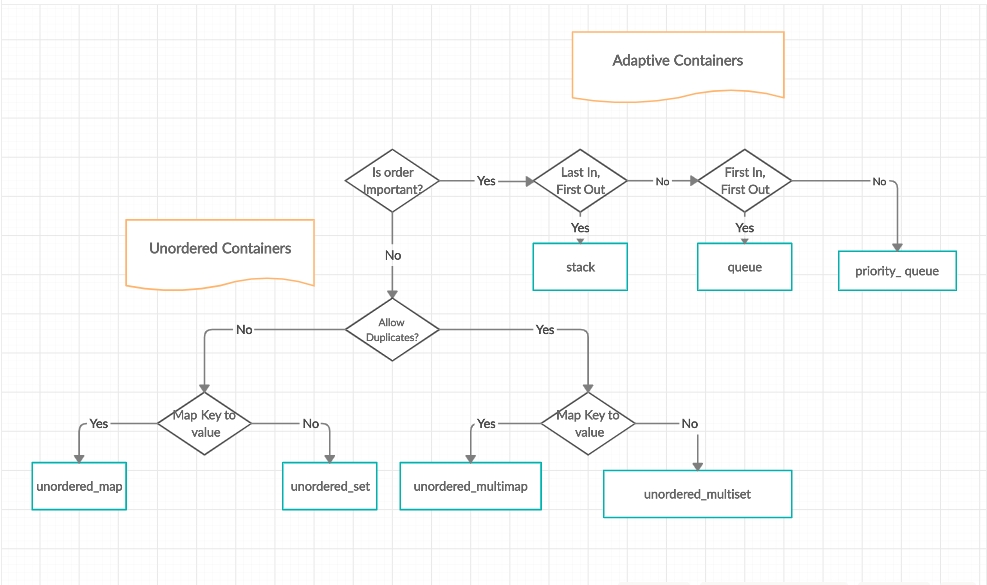📖STL in CPP ( Part IV )
STANDARD TEMPLATE LIBRARY II - SET - 2023
Standard Template Library (STL) II - Associative Containers: Set
Sets and multisets sort their elements automatically. Sets do not allow duplicates while multisets allow duplicates.
#include <iostream>
#include <set>
using namespace std;
struct Compare
{
bool operator()(const int &a;, const int &b;) const
{
return a % 10 < b % 10;
}
};
int main()
{
const int a[] = {8, 2, 24, 9, 7, 3, 4, 6, 15, 2};
const int count = sizeof(a) / sizeof(a[0]);
for(int i = 0; i < count; i++)
cout << a[i] << " ";
cout << endl;
set<int> s(a, a + count);
set<int>::iterator it;
for(it = s.begin(); it != s.end(); ++it)
cout << *it << " ";
cout << endl;
set<int, Compare>::iterator sit;
set<int, Compare> new_s(s.begin(), s.end());
for(sit = new_s.begin(); sit != new_s.end(); ++sit)
cout << *sit << " ";
return 0;
}Output:
As we see from the output of the second line, set srots its element automatically and removes any duplicates. The third line was sorted with the last digits.
Last updated
Was this helpful?
